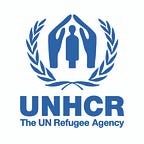Kidnapped, sleep-deprived & stressed — how aid workers train for the worst
When 40 aid workers gathered in Senegal, they were on a mission — learn how to stay calm and work together in a crisis.
By: Helene Caux
Picture the scene: 10,000 refugees have crossed a border overnight. Forced by violence or persecution to leave everything they know and love behind, they are hungry, thirsty and without shelter. They need help and they need it now. What do you do?
Thanks to training workshops by UNHCR, the UN Refugee Agency, held in Thies, Senegal, a further 40 aid workers from around the world are better prepared to deal with emergencies like these.
Participants attending the Workshop for Emergency Management, or WEM, face a range of nightmarish scenarios, from kidnappings and car accidents to severe sleep deprivation, that they could encounter if deployed to manage an influx of refugees.
“Participants always represent a wide variety of UNHCR staff from different backgrounds.”
There are four workshops a year. The participants join a team of facilitators and specialist resource people from UNHCR, an external co-facilitator, role-players and volunteers provided by the different government agencies hosting the programme.
“The participants always represent a wide variety of UNHCR staff from different countries and backgrounds,” says UNHCR’s emergency response and humanitarian crisis specialist Peter Kessler. “We have also had participants from the US government through the Bureau of Population, Refugees and Migrations, from the Norwegian Refugee Council, the Danish refugee Council and UNFPA.”
To date, over 3,000 people have been trained.
“The WEM is a great opportunity for people to come together to learn how to work as a team.”
Several participants from the latest session hailed from war-torn regions, such as Iraq, where UNHCR has been working to help over 3 million people displaced since the start of 2014. Others were once refugees themselves, from countries such as Rwanda and Kosovo.
After their training, WEM ‘graduates’ automatically join a roster and can be deployed to emergency refugee operations within weeks.
Jim Good, 58, has been a WEM trainer since 2014. “The highlight is always the field simulation exercise,” he says. “We do a good job in the classroom-based portion of the workshop, but when participants get out and test some of these ideas in real-world settings it makes it all come alive for them.”
For people like Katja Rytkönen, 37, an executive assistant from UNHCR’s Geneva headquarters, it is an opportunity to learn more about the organization at work. “I always wanted to train for an emergency with UNHCR, because that is really the time when we have to deliver, the time when we have to be efficient and do our job well,” she says. “At HQ, you find yourself very far away from the realities and the challenges. I think when you are deployed to emergency operations, you have a sense that you can actually achieve things and make a difference to people’s lives.”
“You have a sense that you actually achieve things.”
Ibrahim Peghouma, 52, is a senior UNHCR emergency energy and environmental officer based in Dakar, Senegal. Out in the field, training like this can be crucial. “It is fantastic to be able to do this,” says Ibrahim. “We just narrowly escaped an emergency in January this year with the Gambia. Over 76,000 people had left that country to Senegal in less than a month, fleeing political uncertainty. This training comes at the right moment for me, showing me what I should do in case of refugee influxes and how to behave in case of crisis. Everyone who joins UNHCR should enroll in this training in order to learn how to better assist displaced people.”
As wars and persecution continue to drive record numbers of people from their homes — with 65.3 million people, or one person in 113, now displaced — training like this has never been more important.
“I think the WEM is a great opportunity for people from a diversity of backgrounds to come together to learn how to work as a team and how to resolve a refugee crisis,” concludes Kessler.
For more portraits of participants and their thoughts on the WEM, visit: http://kora.unhcr.org/beunhcr-emergency-training/
